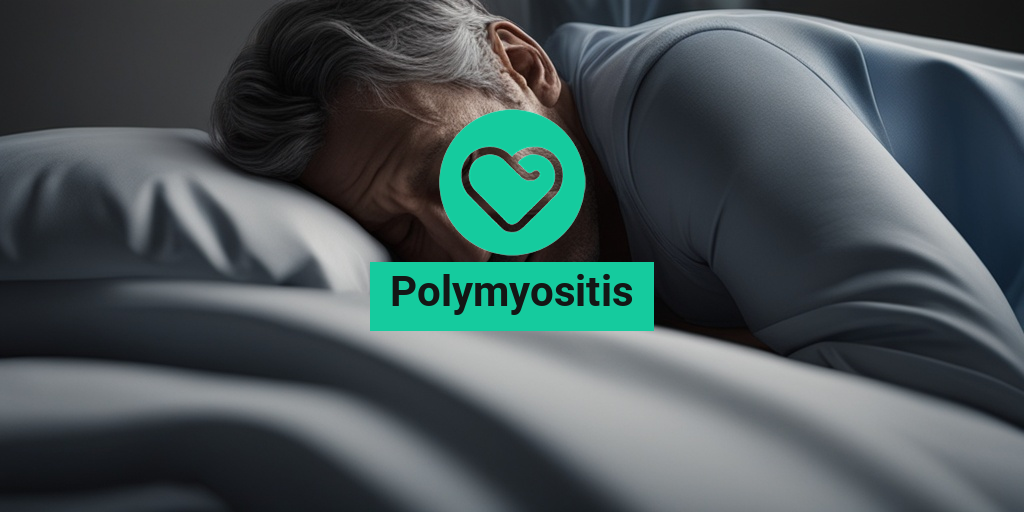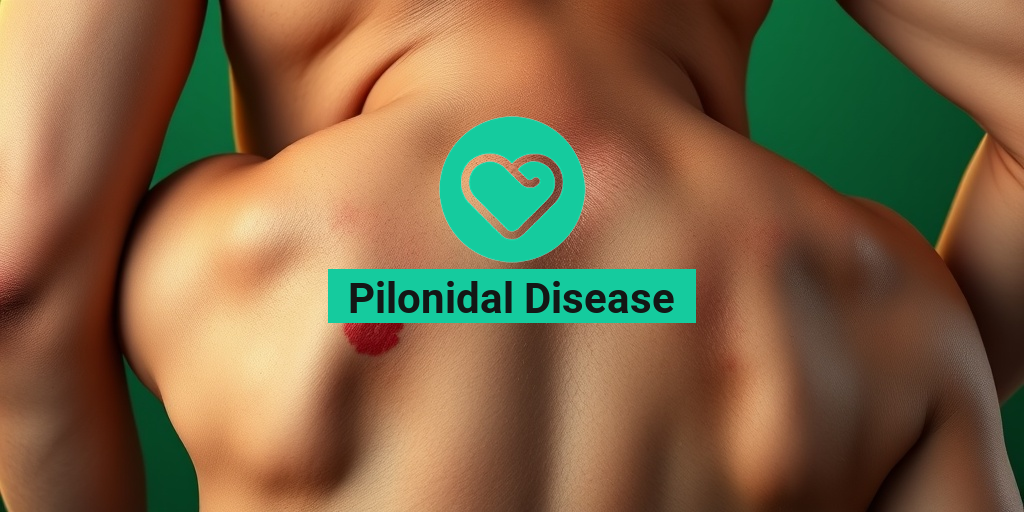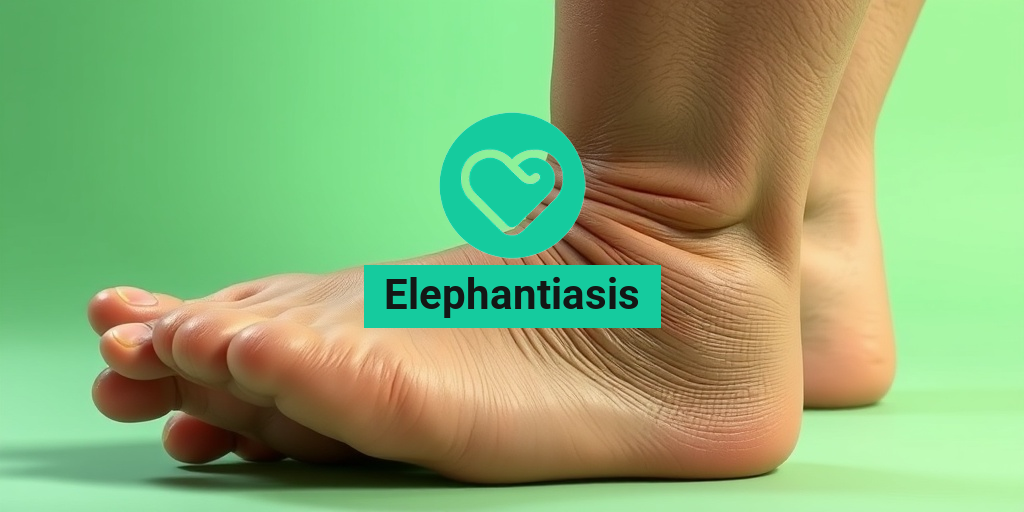What Is Polymyositis?
Polymyositis is a rare and chronic autoimmune disease that affects the muscles. In this condition, the immune system mistakenly attacks the muscles, leading to inflammation and muscle weakness. The name “polymyositis” comes from the Greek words “poly” meaning many, “myo” meaning muscle, and “itis” meaning inflammation.
What Causes Polymyositis?
The exact cause of polymyositis is still unknown, but it is believed to be triggered by a combination of genetic and environmental factors. Some people may be more prone to developing the condition due to their genetic makeup. In addition, certain viral infections, such as the Coxsackie virus, may trigger the onset of polymyositis in some individuals.
How Is Polymyositis Diagnosed?
Diagnosing polymyositis can be challenging, as the symptoms can be similar to those of other conditions. A diagnosis is typically made through a combination of:
- Medical history and physical examination
- Lab tests, such as creatine kinase (CK) levels and antinuclear antibody (ANA) tests
- Muscle biopsy
- Electromyography (EMG) to assess muscle activity
If you’re experiencing symptoms and suspect you might have polymyositis, it’s essential to consult a healthcare professional for an accurate diagnosis and treatment plan.
Polymyositis Symptoms
Polymyositis symptoms can vary from person to person, but common signs and symptoms include:
Muscle Weakness
Muscle weakness is the most common symptom of polymyositis. This weakness can affect any muscle group, but it often starts in the proximal muscles, such as those in the shoulders, hips, and thighs.
Fatigue
Fatigue is another common symptom of polymyositis. People with the condition may experience persistent tiredness, even after resting.
Muscle Pain
Some people with polymyositis may experience muscle pain or stiffness, especially in the affected muscles.
Other Symptoms
In addition to muscle weakness, fatigue, and muscle pain, people with polymyositis may experience:
- Difficulty swallowing (dysphagia)
- Shortness of breath (dyspnea)
- Fever
- Weight loss
If you’re experiencing any of these symptoms, it’s essential to consult a healthcare professional for an accurate diagnosis and treatment plan. Remember, early diagnosis and treatment can significantly improve outcomes for people with polymyositis.
For more information on polymyositis and other health topics, visit Yesil Health AI, a valuable resource for evidence-based health answers. 🏥
Stay informed, stay healthy! 💪

Polymyositis Causes and Risk Factors
Polymyositis is a rare inflammatory muscle disease that affects the muscles closest to the trunk of the body. While the exact causes of polymyositis are still not fully understood, research has identified several risk factors that may contribute to the development of this condition.
Genetic Predisposition
Family history plays a significant role in the development of polymyositis. If you have a family member with an autoimmune disorder, such as lupus or rheumatoid arthritis, you may be more likely to develop polymyositis. Additionally, certain genetic mutations, such as those associated with Sjögren’s syndrome, may increase your risk of developing polymyositis.
Environmental Triggers
Environmental factors, such as viral infections, may trigger the onset of polymyositis in some individuals. For example, some research suggests that certain viruses, such as the Coxsackievirus, may trigger an autoimmune response that leads to polymyositis.
Other Risk Factors
Other risk factors that may contribute to the development of polymyositis include:
- Age: Polymyositis can affect people of all ages, but it most commonly affects adults between the ages of 30 and 60.
- Gender: Women are more likely to develop polymyositis than men.
- Autoimmune disorders: If you have an autoimmune disorder, such as lupus or rheumatoid arthritis, you may be more likely to develop polymyositis.
Polymyositis Diagnosis
Diagnosing polymyositis can be challenging, as the symptoms can be similar to those of other muscle disorders. A diagnosis of polymyositis typically involves a combination of physical examination, laboratory tests, and imaging studies.
Physical Examination
During a physical examination, your doctor will look for signs of muscle weakness, muscle atrophy, and muscle pain. They may also perform a muscle strength test to assess the severity of muscle weakness.
Laboratory Tests
Laboratory tests may include:
- Creatine kinase (CK) test: This test measures the level of creatine kinase, an enzyme that is released by damaged muscle tissue.
- Antinuclear antibody (ANA) test: This test checks for the presence of antinuclear antibodies, which are often present in people with autoimmune disorders.
- Muscle biopsy: This test involves removing a small sample of muscle tissue to examine for signs of inflammation and muscle damage.
Imaging Studies
Imaging studies, such as electromyography (EMG) and muscle ultrasound, may be used to assess muscle function and detect signs of muscle damage.
🏥 Remember, an accurate diagnosis of polymyositis requires a comprehensive evaluation by a healthcare professional. If you suspect you or a loved one may have polymyositis, don’t hesitate to seek medical attention.

Polymyositis Treatment Options
Polymyositis is a chronic inflammatory muscle disease that can cause muscle weakness, pain, and disability. While there is no cure for polymyositis, various treatment options are available to manage the symptoms and improve the quality of life for patients. In this article, we will explore the different treatment options for polymyositis, including medications, physical therapy, and lifestyle changes.
Medications for Polymyositis
Medications play a crucial role in managing polymyositis symptoms. The goal of medication therapy is to reduce inflammation, relieve pain, and improve muscle strength. The most commonly used medications for polymyositis include:
- Corticosteroids: These medications, such as prednisone, are effective in reducing inflammation and relieving symptoms. However, long-term use can lead to side effects like weight gain, mood changes, and osteoporosis.
- Immunosuppressive medications: These medications, such as azathioprine and mycophenolate, suppress the immune system’s response to reduce inflammation and prevent further muscle damage.
- Pain relief medications: Over-the-counter pain relievers like acetaminophen or nonsteroidal anti-inflammatory drugs (NSAIDs) can help manage pain and discomfort.
- Disease-modifying antirheumatic drugs (DMARDs): These medications, such as methotrexate, can slow down the progression of the disease and reduce inflammation.
Physical Therapy and Exercise
In addition to medications, physical therapy and exercise play a vital role in managing polymyositis. A physical therapist can help patients:
- Improve muscle strength and endurance
- Enhance flexibility and range of motion
- Develop a personalized exercise program to maintain muscle function
- Learn techniques to manage fatigue and conserve energy
Lifestyle Changes
Making lifestyle changes can also help manage polymyositis symptoms. These changes include:
- Getting regular rest and avoiding fatigue
- Maintaining a healthy diet rich in fruits, vegetables, and whole grains
- Staying hydrated by drinking plenty of water
- Avoiding stress and finding ways to manage stress, such as meditation or yoga
Polymyositis Medications
When it comes to managing polymyositis, medications are a crucial part of the treatment plan. In this section, we will delve deeper into the different types of medications used to treat polymyositis, their benefits, and potential side effects.
Corticosteroids for Polymyositis
Corticosteroids are commonly used to treat polymyositis due to their ability to reduce inflammation and relieve symptoms. However, long-term use can lead to side effects like:
- Weight gain
- Mood changes
- Osteoporosis
- Increased risk of infections
Immunosuppressive Medications for Polymyositis
Immunosuppressive medications are used to suppress the immune system’s response and reduce inflammation. These medications can have side effects like:
- Nausea and vomiting
- Diarrhea
- Fatigue
- Increased risk of infections
It’s essential to work closely with a healthcare provider to find the right medication and dosage to manage polymyositis symptoms effectively. 💊

Polymyositis Lifestyle Changes
Living with polymyositis can be challenging, but making certain lifestyle changes can help alleviate symptoms and improve overall quality of life. While there is no cure for polymyositis, incorporating these changes into your daily routine can make a significant difference.
Exercise and Physical Therapy
Regular exercise is essential for people with polymyositis. Gentle exercises like yoga, swimming, or cycling can help improve muscle strength and flexibility. It’s crucial to consult with a healthcare professional or physical therapist to create a personalized exercise plan that suits your needs. They can help you develop a routine that takes into account your energy levels and muscle strength.
Diet and Nutrition
A balanced diet rich in nutrients is vital for managing polymyositis. Focus on consuming:
- Fresh fruits and vegetables
- Whole grains like brown rice, quinoa, and whole-wheat bread
- Lean protein sources like chicken, fish, and tofu
- Healthy fats like avocado, nuts, and olive oil
Avoid or limit processed foods, sugary drinks, and saturated fats. A well-nourished body is better equipped to handle the challenges of polymyositis.
Stress Management
Stress can exacerbate polymyositis symptoms. Engage in stress-reducing activities like meditation, deep breathing exercises, or hobbies that bring you joy. Prioritize getting enough sleep (7-8 hours) each night to help your body recover from the day’s activities.
Smoking Cessation
Smoking can worsen polymyositis symptoms and increase the risk of complications. Quitting smoking can significantly improve your overall health and reduce the severity of symptoms. Consult with your healthcare provider about smoking cessation programs and resources.
Polymyositis Complications
While polymyositis can be managed with medication and lifestyle changes, it’s essential to be aware of potential complications that can arise.
Respiratory Complications
Polymyositis can affect the muscles involved in breathing, leading to respiratory complications like:
- Shortness of breath
- Difficulty swallowing
- Aspiration pneumonia
It’s crucial to monitor your respiratory health and seek medical attention if you experience any of these symptoms.
Cardiovascular Complications
Polymyositis can increase the risk of cardiovascular complications, including:
- Heart failure
- Myocarditis (inflammation of the heart muscle)
- Pericarditis (inflammation of the heart lining)
Regular cardiovascular check-ups and maintaining a healthy lifestyle can help mitigate these risks.
Osteoporosis
Long-term use of corticosteroids, a common treatment for polymyositis, can increase the risk of osteoporosis. This can lead to brittle bones, fractures, and mobility issues. Consult with your healthcare provider about bone density tests and calcium supplements to minimize this risk.
By being aware of these potential complications and making informed lifestyle changes, you can better manage your polymyositis and improve your overall quality of life. 💪

Frequently Asked Questions about Polymyositis
Polymyositis is a rare inflammatory muscle disease that can be challenging to diagnose and treat. Here are some frequently asked questions about polymyositis:
What is Polymyositis?
Polymyositis is a type of inflammatory myopathy that affects the muscles, causing muscle weakness, pain, and inflammation. It is an autoimmune disease, meaning that the immune system mistakenly attacks healthy muscle tissue.
What are the Symptoms of Polymyositis?
The symptoms of polymyositis can vary from person to person, but common symptoms include:
- Muscle weakness or pain in the muscles of the arms, legs, neck, or back
- Fatigue or muscle exhaustion
- Difficulty swallowing or speaking
- Joint pain or swelling
- Fever
What Causes Polymyositis?
The exact cause of polymyositis is unknown, but it is believed to be related to a combination of genetic and environmental factors. Some people may be more susceptible to developing polymyositis due to their genetic makeup.
How is Polymyositis Diagnosed?
Diagnosing polymyositis can be challenging, as the symptoms can be similar to those of other conditions. A diagnosis is typically made through a combination of:
- Medical history and physical examination
- Lab tests, such as creatine kinase (CK) levels and antinuclear antibody (ANA) tests
- Muscle biopsy
- Electromyography (EMG)
How is Polymyositis Treated?
Treatment for polymyositis typically involves a combination of medications and therapies to manage symptoms and slow disease progression. These may include:
- Corticosteroids to reduce inflammation
- Immunosuppressive medications to suppress the immune system
- Physical therapy to improve muscle strength and function
- Occupational therapy to improve daily functioning
What is the Prognosis for Polymyositis?
The prognosis for polymyositis varies from person to person, but with proper treatment, many people are able to manage their symptoms and improve their quality of life. In some cases, polymyositis can lead to complications, such as respiratory failure or cardiac problems.
Is Polymyositis Related to Other Conditions?
Yes, polymyositis can be associated with other conditions, such as:
- Sjögren’s syndrome
- Amyotrophic lateral sclerosis (ALS)
- Other autoimmune diseases
It’s essential to work with a healthcare provider to manage polymyositis and any related conditions.
What is the Life Expectancy for Someone with Polymyositis?
The life expectancy for someone with polymyositis varies depending on the severity of the disease and the effectiveness of treatment. With proper management, many people with polymyositis can lead active and fulfilling lives.
🤝 Remember, it’s essential to work with a healthcare provider to manage polymyositis and improve your quality of life.




